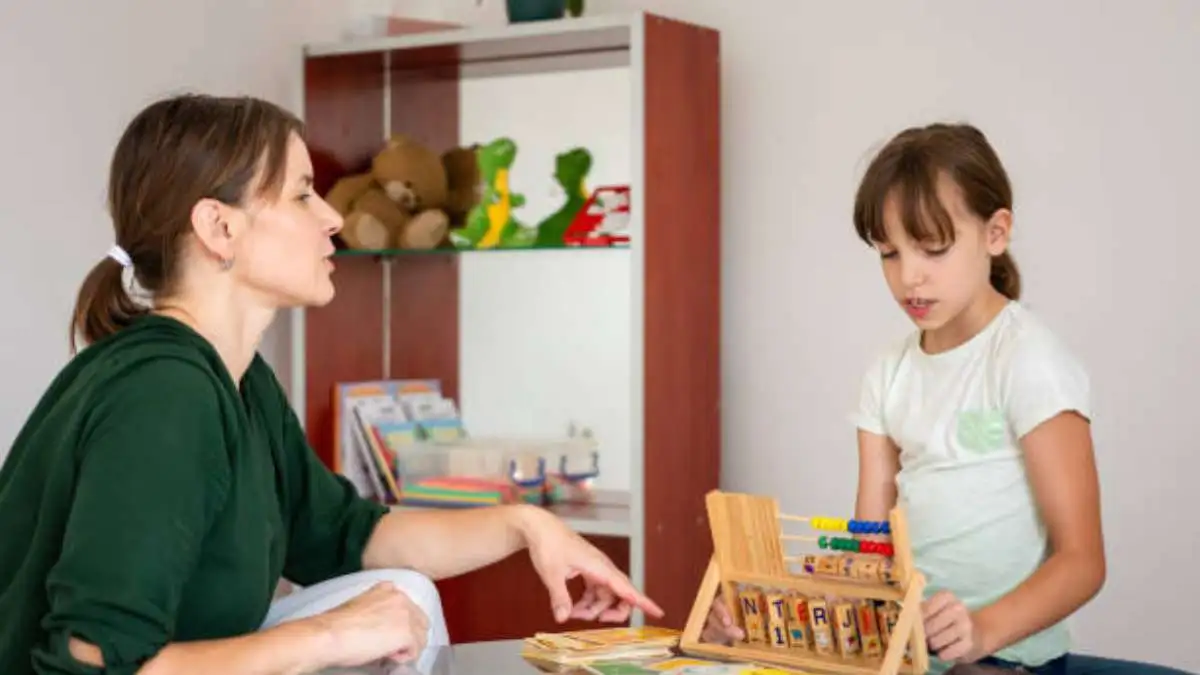HEALTH AND FITNESS
The Impact of Home-Based ABA Therapy on Family Dynamics

Introduction: Bringing Therapy Home
Home is where children spend the majority of their time, making it an ideal setting for Applied Behavior Analysis (ABA) therapy. Home-based ABA therapy integrates therapeutic interventions into the child’s everyday environment, promoting natural learning and generalization of skills. But beyond the child’s progress, home-based ABA therapy has a profound impact on the entire family. This approach not only supports the child’s development but also influences family dynamics, creating opportunities for closer relationships, improved communication, and a more supportive home environment. This article explores how home-based ABA therapy shapes family life and the ways in which it strengthens the family as a whole.
Table of Contents
The Benefits of Home-Based ABA Therapy
1. Natural Learning Environment
One of the key advantages of home-based ABA therapy is that it occurs in the child’s natural environment. This setting allows for real-world application of skills and behaviors, making learning more relevant and effective.
- Contextual Learning: In a familiar environment, children can practice skills in the context in which they will use them. For example, a child might work on social skills during family meals or improve self-care routines in their own bathroom. This contextual learning helps the child understand when and how to apply new skills, leading to better generalization.
- Reduced Stress and Anxiety: Being in a familiar setting can reduce the child’s stress and anxiety, making them more receptive to learning. The comfort of home often allows children to engage more fully in therapy, which can lead to faster progress and a more positive experience overall.
2. Involving the Entire Family
Home-based ABA therapy naturally involves the entire family, making it a collaborative process that benefits everyone. Parents, siblings, and even extended family members can play a role in supporting the child’s development.
- Parental Engagement: Parents are more easily involved in therapy sessions when they occur at home. They can observe, participate, and learn strategies from the therapist that they can implement throughout the day. This hands-on involvement empowers parents to support their child’s growth more effectively.
- Sibling Interaction: Siblings also benefit from being part of the therapy process. They learn how to interact with their brother or sister in ways that support positive behaviors and communication. This involvement can strengthen sibling bonds and create a more harmonious family dynamic.
How Home-Based ABA Therapy Influences Family Dynamics
3. Strengthening Family Relationships
Home-based ABA therapy often leads to stronger family relationships, as it encourages more interaction, communication, and collaboration among family members.
- Building Communication Skills: ABA therapy frequently focuses on improving communication skills, which can positively impact family interactions. As the child’s communication improves, they can express their needs and feelings more effectively, reducing frustration and misunderstandings. This improved communication benefits not just the child, but the entire family, as it fosters more meaningful and positive interactions.
- Collaborative Problem-Solving: Families working together to support the child’s progress often find that they become better at collaborative problem-solving. When challenges arise, whether related to the child’s behavior or other aspects of family life, the skills learned through ABA therapy—such as breaking down tasks, setting clear goals, and using positive reinforcement—can be applied to resolve issues more effectively.
4. Creating a Supportive Home Environment
Home-based ABA therapy helps create a more structured and supportive home environment, which benefits all family members.
- Establishing Routines: ABA therapy often involves creating consistent routines, which can provide a sense of stability and predictability for the child. These routines, such as set times for meals, homework, or bedtime, can reduce stress and make the household run more smoothly.
- Positive Behavior Support: The strategies used in ABA therapy, such as positive reinforcement and clear expectations, can be adopted by all family members. This consistent approach to behavior management helps create a calm and positive atmosphere in the home, where everyone knows what to expect and how to interact effectively.
5. Enhancing Family Resilience
The challenges of raising a child with autism or other developmental disorders can be significant, but home-based ABA therapy can enhance family resilience by providing tools and strategies that help the family cope and thrive.
- Empowerment Through Knowledge: As parents and siblings learn more about ABA techniques, they gain a better understanding of the child’s needs and behaviors. This knowledge empowers them to respond more effectively and reduces the feelings of helplessness or frustration that can sometimes arise.
- Strengthening Coping Strategies: ABA therapy often includes teaching coping strategies, not just for the child, but for the entire family. These strategies might involve managing stress, setting realistic expectations, and finding ways to recharge and take care of their own well-being. A family that feels equipped to handle challenges is more resilient and better able to support each other.

Addressing Common Challenges in Home-Based ABA Therapy
6. Balancing Therapy and Family Life
While home-based ABA therapy offers many benefits, it can also present challenges, particularly when it comes to balancing therapy with other aspects of family life.
- Maintaining Boundaries: It’s important to maintain boundaries between therapy time and family time. While integrating therapy into daily routines is beneficial, there should also be time for relaxation, play, and family activities that don’t involve structured therapy. Clear communication with the therapist about family schedules and priorities can help maintain this balance.
- Avoiding Burnout: Both parents and children can experience burnout if therapy becomes too intensive or overwhelming. It’s essential to monitor the family’s well-being and adjust the therapy schedule as needed to ensure that everyone has time to rest and recharge.
7. Coordinating with Other Services
Families often juggle multiple services, such as school, speech therapy, or occupational therapy, in addition to ABA therapy. Coordinating these services to ensure that they complement rather than conflict with each other is crucial.
- Communication with Providers: Open communication between all service providers is key to ensuring that the child’s needs are met holistically. Regular meetings or updates can help coordinate efforts and ensure that the therapies are aligned in their goals and strategies.
- Integrated Care Plans: Developing an integrated care plan that includes input from all providers helps create a cohesive approach to the child’s development. This plan should consider the family’s schedule and resources, making sure that therapy remains manageable and effective.
Long-Term Benefits of Home-Based ABA Therapy
8. Promoting Independence
One of the long-term goals of ABA therapy is to promote independence, and home-based therapy is particularly effective in achieving this goal.
- Real-Life Skills: By practicing skills in the environment where they will actually be used, children are more likely to generalize those skills and apply them independently. For example, learning to dress oneself, prepare simple meals, or manage personal hygiene can be more effectively taught and reinforced at home.
- Gradual Fading of Support: Over time, the level of support provided by the therapist can be gradually reduced, allowing the child to take on more responsibility and independence. This approach helps prepare the child for future stages of development, such as transitioning to school or more independent living.
9. Building a Foundation for Lifelong Learning
The skills and strategies learned through home-based ABA therapy provide a foundation for lifelong learning and development.
- Adaptive Learning: As the child grows, the principles of ABA can be adapted to address new challenges and goals. The family’s involvement in therapy ensures that these principles are woven into the fabric of daily life, supporting continuous learning and adaptation.
- Ongoing Family Involvement: The skills that parents and siblings learn through home-based ABA therapy continue to benefit the family long after formal therapy has ended. These skills help the family navigate future challenges with confidence and resilience, ensuring ongoing support for the child’s development.
Home-based ABA therapy can significantly improve family dynamics by providing tailored support that helps children with autism thrive in their familiar environment. By partnering with services like Kids Club ABA, families can benefit from personalized strategies that not only enhance the child’s development but also strengthen family bonds through effective communication and shared progress.
Conclusion: The Transformative Power of Home-Based ABA Therapy
Home-based ABA therapy is more than just a convenient option for delivering therapeutic services; it’s a transformative approach that positively impacts the entire family. By bringing therapy into the home, families can create a supportive environment that fosters both the child’s development and stronger family relationships. While there are challenges to navigate, the long-term benefits—ranging from improved family dynamics to enhanced independence—make home-based ABA therapy a powerful tool for promoting growth and well-being. As families and therapists work together within the familiar surroundings of home, they create a nurturing space where every family member can thrive.
-

 GENERAL6 months ago
GENERAL6 months agoChristofle – For Those Who Dream of Family Heirloom Silver
-

 SPORTS8 months ago
SPORTS8 months agoDiscover the World of Football with Streameast: Watch Your Favorite Leagues and Tournaments
-

 GENERAL4 months ago
GENERAL4 months agoUncovering the World of кинокрадко: The Dark Side of Film Piracy
-

 GENERAL2 months ago
GENERAL2 months agoATFBooru: Anime, Gaming, and Subculture Imageboard





























